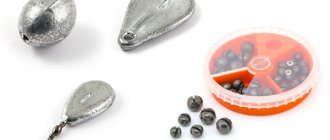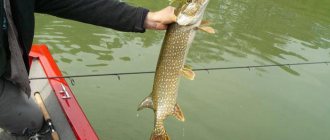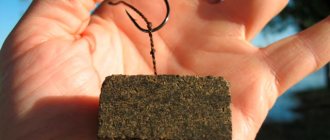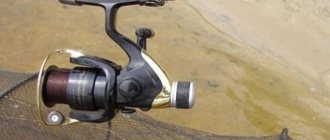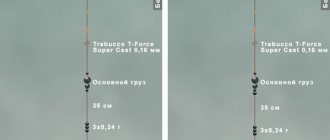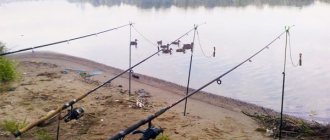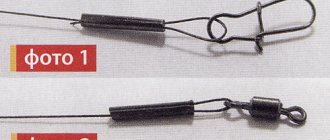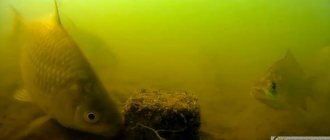Picker selection
Among rods designed for bottom fishing, the picker, which differs from the feeder in its increased sensitivity and compactness, takes pride of place. A picker rod is suitable for fishing from the shore in a small body of water where long casting is not required. Picker has proven itself well in hunting roach, white bream, silver bream, bleak, and crucian carp.
Such a rod with the appropriate equipment will come to the aid of the fisherman in cases where casting feeder gear is too complicated by environmental conditions. Also, a picker is also a good alternative to a match-type float rod.
When choosing a picker rod, you need to understand that the picker is suitable for fishing with small loads (up to 50 grams) at a short distance from the shore. The picker is especially good for small fish, as it is very sensitive and perfectly transmits bites from even the smallest fish.
For more information about length, test, action, tips and other aspects of choosing pickers, read the article “How to choose a picker.” Also in the article you will find an interesting video review of an inexpensive picker rod from SALMO.
Choosing a picker rod
The picker rod usually does not exceed 2.7 m in length and consists of two legs. Its maximum test is no more than 40-50 g.
- It is easy to distinguish a picker rod from a feeder. Well-known manufacturers such as Drennan, Shimano, Hardy or Preston simply add the word “picker” to the name of the gear.
- Another distinctive feature is the short handle, which allows you to cast with one hand.
When purchasing a picker, the first thing you need to do is check the balance of the rod. The center of gravity should be in the grip area, which places the reel leg between the middle and ring fingers. Typically, balance is checked by placing the fishing rod where the center of gravity should be, on your finger. If balance is maintained, then the tackle is normal.
Picker rods, like all others, have a structure that is differentiated by their ability to bend when casting or under load. There are four types of fishing rods for picker:
- slow or parabolic, in which the entire rod bends;
- medium, providing for bending from the middle of the structure;
- fast, when only the tip bends;
- super-fast, in which only part of the tip bends;
In addition, you should pay attention and select several tips that correspond to the class of the rod. A good quivertip and well worth it. The thinner, softer and stronger it is, the more expensive it is. But in no case should you skimp on it, because the tip for a picker is its main component, on which the fishing result largely depends.
Picker shimano
The picture above shows a wonderful picker rod from the famous company Shimano . The rod is called Super ULTEGRA Winkle Piker 240-270 . It is made on a high-tech carbon blank, and thanks to an additional section it can be extended by 30 centimeters.
This picker is ideal for fishing with small loads at a distance of up to 50 meters.
The rod comes with three interchangeable tips. The kit also includes a convenient case with a recess for a small reel. The optimal reel size for this rod is 2500.
Parameters of Shimano Super ULTEGRA Winkle Piker 240-270:
- Unfolded length: 240-270 cm.
- Folded length: 113 cm.
- Weight: 154 grams.
- Number of sections: 4+3 tips.
- Casting: 40 grams.
Picker and features of its use|Part 1:
What is a picker ? This is perhaps one of the lightest gear for bottom fishing. But more often than not, fishermen relegate it to the background, preferring a feeder. In fact, the picker has as many advantages as the feeder and other types of fishing. This kind of fishing gives no less results, and is in no way inferior in terms of excitement. Picker is most often used in dynamic bottom fishing for not very large fish. Such as roach, crucian carp, white bream, rudd. For picker, as a rule, they choose reservoirs of weak or medium current; it is better to choose a short or medium distance and use light equipment. If we talk specifically about reservoirs, it is better to choose a small pond or lake, or a narrow river. The short length of the picker gives a huge advantage in those places where casting is difficult due to coastal thickets. In general, fishing with a picker and a feeder has a lot in common, but you must take into account some significant differences.
How to choose a picker rod?
For a picker rod, equipment in the range of 30-50g is suitable. The main thing here is not to make a mistake with the choice, because... Sometimes manufacturers choose different tool designations. Some indicate the maximum and minimum weight, some indicate the size in Latin letters. So, L – light, M – medium, H – heavy. A number of manufacturers also have intermediate values, for example, medium-light, medium-heavy.
It is worth considering that a picker is a lightweight rod in which the parts are connected by a plug-in method, the maximum weight of the equipment should be 50 g, and the length should be from 2.1 to 3.0 or even 3.3 meters. Perhaps the store will offer you telescopic pickers that are inexpensive. But it is better not to use them at all, they have poor technical characteristics and such a picker will not last long.
The rod must be selected taking into account the main parameters - length and action. The length will be responsible for throwing ability. The ideal parameters here are from 2.4 to 2.7 m. Pickers are usually fished at short and medium distances, so a long length is not necessary.
Now let's talk about the picker structure. It can be from parabolic to ultra-fast. If you choose a parabolic action, then it is much easier for them to cast light equipment, and the bite of large fish is more clearly conveyed. You shouldn’t make big claims about the picker’s casting range, and large fish are also not the picker’s cup of tea. But if you catch small fish, then the sensitivity here is quite good. The golden mean is a hard picker with a fast action.
Let us remind you that picker rigs vary from 10 to 30-50 g. If you throw equipment with dough weighing from 10 to 50 g, then the equipment should be from 5 to 50 g. However, overload should be avoided, because Casting accuracy will suffer, as will casting distance. You also run the risk of quickly breaking the picker and deteriorating its technical characteristics as a whole. How to determine the optimal weight of the equipment you are casting. You can use the following formula for calculation: min weight of the thrown equipment + (max weight of the thrown equipment – min weight of the thrown equipment) / 2.
In a specific example, it looks like this: Picker with dough 10-50 g. the formula is:
10 + (50-10)/2 = 10+20=30 g. Those. It would be optimal to use a 20 gram feeder and 10 grams of groundbait.
Very often in a set with a picker you can find several tips made of carbon and fiberglass. They are designed for fishing in various conditions and for using equipment of different weights. It is necessary to correctly determine the marking of the tips if it is not indicated. Then you need to determine them yourself. Grasp all the tops near the tulips with your index finger and thumb. The deflection of the tips will indicate their rigidity. The one that bends the most is the softest.
Most likely, you will find a pickerel with a short handle. The fact is that the long handle allows you to make a power cast with both hands over a long distance, this applies directly to the feeder. There is no need to make power casts with a picker and you can handle it; I do all the manipulations with one hand, which is why the handles of the picker are short.
How to choose a picker reel?
For pickerel fishing, it is important to find a balance between rod and reel. The picker itself is light and very delicate, i.e. and the coil must be appropriate. You can opt for a lightweight, inertia-free reel of size 1000 - 2000. But it is impossible to recommend one thing that is universal for all pickers. For each specific fishing rod, you need to select a reel individually, because... Reels from different companies have different weights.
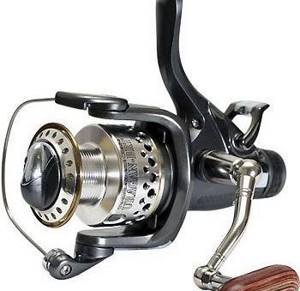
In order for fishing to be enjoyable and not be hard physical labor, you need to correctly set the center of gravity of the picker. It should be where the fisherman holds the rod and reel, namely near the reel leg. This very balance of the rod and reel can be easily checked by doing one simple test. Place the place where the rod and reel connect on your index finger. If the balance is set correctly, the rod will lie flat on your finger, without falling to one side or the other. If there is no balance, the rod will tilt to one side. If the part with the coil outweighs, you have chosen the wrong coil weight, it is too large. If the side without the coil outweighs, then, accordingly, the coil is very light. We recommend that you always check the coil this way, because... its wrong choice will give a negative result: the fisherman will quickly get tired, because... fishing will be very inconvenient, you will catch slowly, and it is unlikely that you will have a good catch. And when it comes to fishing competitions, this is simply unacceptable. Also check the uniform laying of the fishing line, the smoothness of its movement, the operation of the clutch and other characteristics that are important for the picker.
To be continued…
Picker feeders
Often, the picker test does not exceed 50 g, and it follows that the feeder should have a minimum weight. After all, we throw a feeder filled with food, and if the empty feeder weighs 30 g, then the food in it weighs 10-30 g, and in total we get 60 g, which exceeds the maximum picker test.
It follows that an empty picker feeder should weigh around 10-30 g.
Maximum range and accuracy are achieved when the weight of the cast equipment is equal to ¾ of the maximum test of the rod.
One more important note! If fishing takes place at a short distance, and it is possible to cast bait by hand, then the feeder can be replaced with a weight. The sinker should be streamlined so that when it enters the water it does not create much noise.
You can find out more about the types of feeders in the article on feeder feeders.
Picker reel
An important element of picker tackle is the reel. When choosing it, you must take into account the correspondence of the mass and balance of the gear as a whole. An excellent balance of gear is achieved by installing a reel of size 3000, but sometimes, when maximum speed is important, when sport fishing on a pickerel , reels of at least 4000 or even 5000 are installed.
When using heavier reels, the center of gravity of the tackle is almost in the hand. In this case, it is more comfortable to work with the rod, since the weight of the blank and equipment is felt less when casting and retrieving.
However, when installing a large reel on the picker, beating may occur on the first ring (closest to the reel seat) when the line is reeled out or overlapped during casting. This problem is solved by replacing this ring with a larger one. The reel must also lay the line on the spool efficiently and have a sensitive drag.
Read! Fishing for bream in early autumn on picker
Picker line
Both regular monofilament and braided line are suitable for the role of the main fishing line, although the second is more sensitive. Leaders are made of monofilament or fluorocarbon with a diameter of 0.1-0.12 mm.
You choose the length of the leash yourself, from 20 cm to one and a half meters. Lengthening the leash will increase the time it takes to fall to the bottom, thereby increasing the animation time of the bait in the water column. We recommend lengthening the leash when the bite is sluggish.
Shortening the leader will likely reduce the number of bites, but increase the chances of catching larger fish. This is due to the fact that if a large fish comes to feed, it will disperse the small fish. Small fish will stay in the water column, that is, a long leash will fall to the bottom for a long time, and most likely will be immediately attacked by small fish located higher above the bait.
Line selection
The success of pickerel fishing often depends on the correct choice of main line. As a rule, when fishing with pickerel, feeder monofilaments with a diameter of 0.15-0.20 mm are used as the main line. At short fishing distances, their extensibility is minimal and the sensitivity of the gear does not suffer.
Only in exceptional cases, when the bites are especially careful, does it make sense to use braided cords of small diameters, 0.08 mm or thinner. For example, when fishing for sluggish roach in the midst of a hot summer on reservoirs without a current, the bites are so delicate that they are hardly visible even with “braid” as a basis.
How to feed
Picker fishing is not complete without preliminary bait in the area where fishing is planned in the future. In this case, the feeding process does not cause any difficulties, since the casting range will be short.
Read about how to make the right bait in the article: “Preparing bait for the feeder.”
Casting bait can be done in three ways:
- manual throwing of feed;
- use of feeders;
- use of a special bait slingshot.
How to fish with pickerel
Before casting, it is necessary to carry out starting bait in a promising area of the reservoir. If you plan to throw bait by hand, then 4-5 balls will be enough, for a special slingshot - about 10-12 shots. After 5-10 minutes you can start casting.
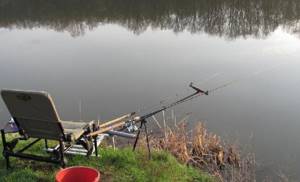
If you think that the fishing spot is well fed, you should replace the feeder with a streamlined sinker, which will make less noise when it hits the water. This technique will reduce the timidity of the fish, which will have a positive effect on the rate of pickerel fishing. Subsequent feeding can be done either by hand or with feeders.
For picker fishing to be truly effective and subsequently effective, it is necessary to constantly monitor the condition of the gear.
It is extremely rare for a fish to hook itself, so the fisherman must always be ready to make a good hook.
Hooking, especially using braid, should not be too sharp, otherwise instead of a fish you will only get its lip.
Don't forget about replaceable tips. In calm conditions and in calm water, use a soft tip; in strong winds or currents, use a harder tip.
If you use bloodworms or maggots in bait, they should not be too large. Place more appetizing bait on the hooks, which will surely attract the attention of the fish. You can also spray the nozzle with special dips (flavors). This will make your bait stand out from the general background of bait.
Picker equipment
Correctly selected equipment when fishing with pickerel ensures almost half of the success. After all, the overall sensitivity of the gear, the effectiveness of bites and their implementation depend on the equipment used.
The choice of equipment for fishing with a picker is the same as for traditional feeder fishing, except that the fasteners and swivels are chosen to be smaller for greater sensitivity and ease.
An unsurpassed favorite among rigs for pickerel fishing is the paternoster. It is very simple, virtually tangle-free and sensitive enough to catch even small fish. The Gardner Paternoster is the most versatile equipment that will not let you down in any fishing conditions.
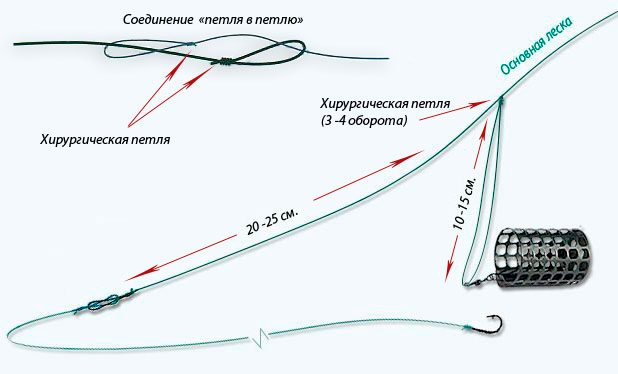
Another feature of this type of equipment is the possibility of manufacturing without the use of accessories (swivels, fasteners, etc.), and this is an undeniable plus for achieving maximum sensitivity of the equipment.
The equipment is selected depending on the fishing conditions and the mood of the fish; The fisherman’s preferences and skills also play a significant role in this. Hooks are selected for specific fishing depending on the size and type of bait and the intended fish.
